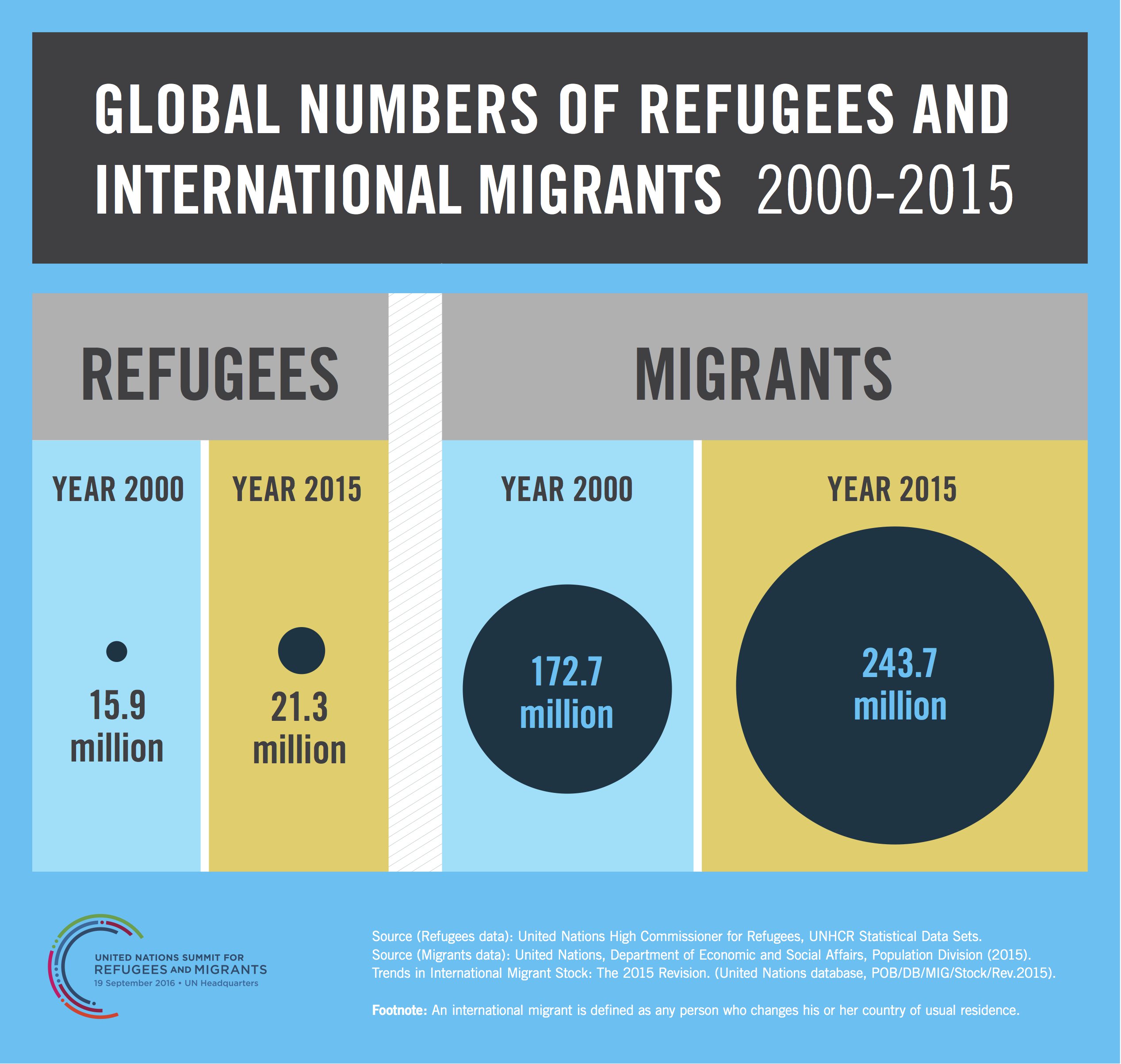For those involved in refugees and migration research, the events in New York two weeks ago provided the perfect opportunity to influence the world’s leaders as they gathered for the United Nations High Level Summit on Refugees and Migrants.
Many research reports, policy briefs and graphics were produced, attempting to illuminate an otherwise dark debate with evidence and analysis. However, in a move altogether typical of a time characterised by the death of experts, many of these pieces flew under the political clamour.
For those of us following the #UN4RefugeesMigrants debate, it was evident that much good work was being produced: research that would still be relevant for policymakers and other researchers long after leaving New York. Here's a summary:
Journeys and motivations
- The ESRC-funded Mediterranean Migration Research Programme (MEDMIG) interviewed 500 refugees and migrants, finding that the simple narrative of routes taken by refugees and economic migrants (which are presumed distinct) is actually far more complicated and diverse.
- New ODI research – accompanied by infographics and an animation – shows that while EU policies will decrease the number of people ‘overtly’ arriving in Europe this year, almost 500,000 people will come through illegal routes.
- REACH conducted over 1,000 interviews with migrants heading to Europe through the Western Balkans - painting an excellent picture of who these people are, why they have come to Europe, how they are travelling and the impact of policies on their route.
Forced displacement, protracted displacement and humanitarian assistance
- The World Bank and UNHCR find that over the past 25 years, the majority of both refugees and IDPs can be traced to just a few conflicts. They identify three phases where development institutions can intervene to reduce the future refugee costs of these conflicts.
- Farsight present a wealth of data on refugees and internally displaced people, analysing records since the Second World War. They conclude that the real 'crisis' lies behind global migration management, and patchy data collection.
- Drawing on experience from a cash assistance and livelihoods programme in urban Lebanon and Jordan, new research from the International Rescue Committee (IRC) finds that humanitarians should be doing more to link cash assistance to sustainable livelihoods interventions.
- Tufts University and the Migration Policy Institute evaluated the efforts of aid agencies to improve the livelihoods and economic opportunities of refugees in their country of first asylum; important given the 40% of forcibly displaced people in situations of protracted displacement.
- Along with general data on forced displacement, Development Initiatives analyse the financing mechanisms available for refugee support. They find that short term emergency responses alone are not sufficient, and that a wider repertoire of international financing instruments is needed.
- As part of a broader piece of work on human trafficking in conflict and post-conflict situations, Caritas analysed case studies across the Euro-Mediterranean to assess the problem of migrant trafficking. They conclude with a series of policy recommendations.
Policy
- The latest OECD Migration Policy Debates publication focused on alternative pathways refugees could take to avoid costly and dangerous routes through traditional asylum channels. These pathways include labour, international study and family migration, humanitarian visas and private sponsorship schemes.
- Using case studies in Indonesia, Kenya and Jordan, ODI published a report and policy brief analysing the harmful ripple effect of restrictive EU refugee policies on the policies of poorer countries.
- In the first of a series, Brookings analysed the response of 15 German cities to refugee and migrant flows, highlighting the importance of including local governments, businesses and civil society in the (hitherto national) policy debate.
- New research from the Euro Mediterranean Human Rights Monitor analysed the Swedish response to the Syrian refugee crisis. It looks primarily at the asylum system, how it could be improved, and how the Swedish model could be exported to the rest of Europe.
- Roger Zetter and Héloïse Ruaudel (Oxford University) published a new working paper analysing the legal frameworks of 20 countries as to their provisions and constraints on refugees’ right to work, as per the 1951 Refugee Convention.
- Trócaire made a series of recommendations to the Irish government on how to engage with the EU Migration Partnership Framework, to ensure that the EU’s migration policies are human rights and protection focused.
Facts, figures and case studies
- Oxfam used a number of case studies, photos and quotes to highlight the situation of refugees and IDPs across the world, and to create a good background document on the current crisis.
- The United Nations published a series of good infographics on the data behind the narrative. Particularly interesting is the contributions of migrants to economic growth.
- 'Nearly one in 100 people worldwide are now displaced from their homes' – one of ten good, concise, facts about refugees and migrants entering Europe and the United States from the Pew Research Center.
Other
- At the UN High Level Summit, the International Organization for Migration (IOM) became a related, and lead migration, agency of the UN. Based on more than 60 staff interviews, the Future United Nations Development System argues we shouldn’t be that optimistic about this move.
- And, finally, the Center for Global Development (CGD) released a podcast with Michael Clemens and Cindy Huang discussing what ideas, elements and policy innovations world leaders should take into account when formulating and delivering on the global compact for refugees and migrants, the New York Declaration.
That's my round-up – if I missed your report, please let me know and I will include it in this list.
Updated 8 November 2016.

